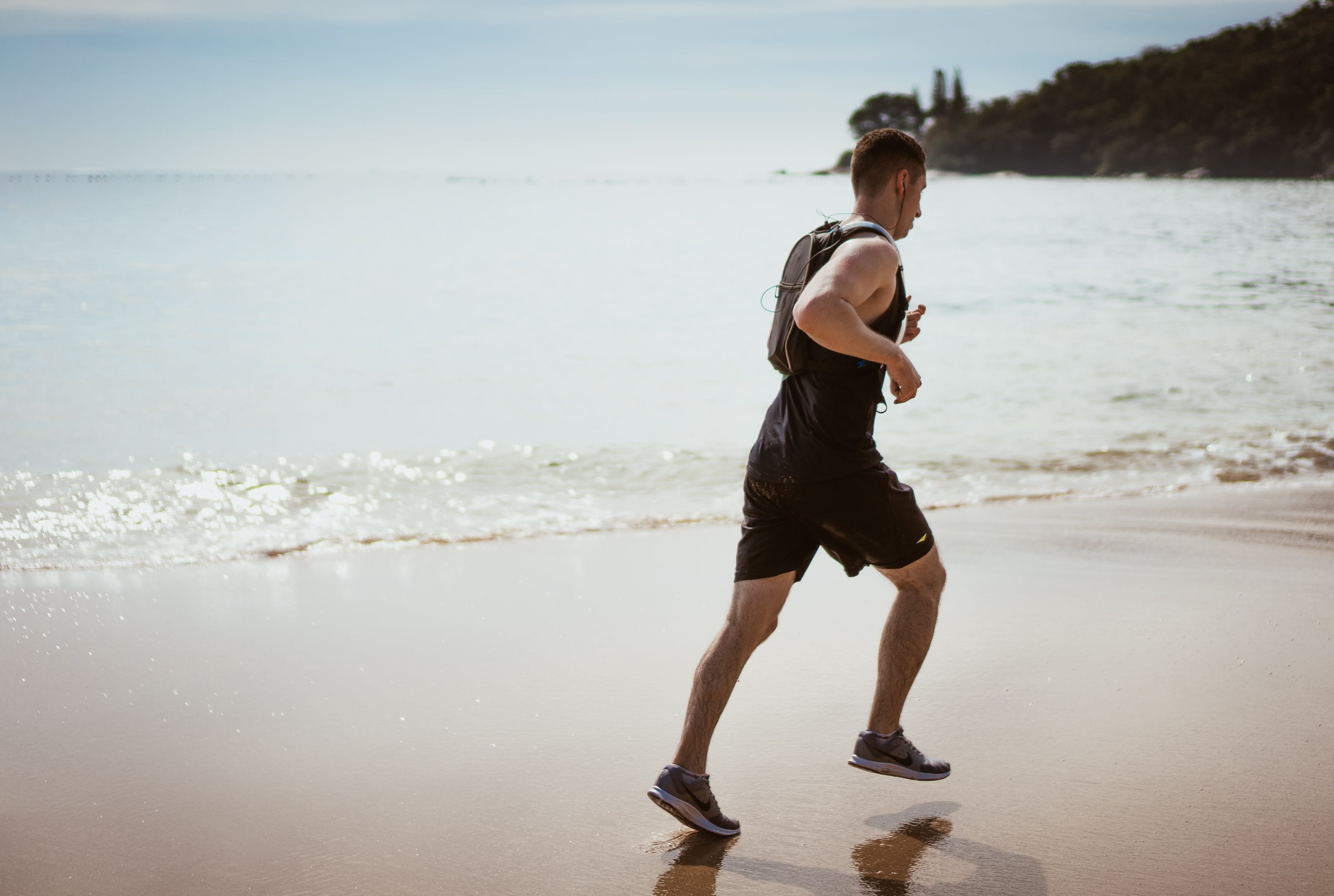In the quest for optimal fitness, choosing the right activity can significantly impact your journey. Both mountain biking and running offer unique benefits that cater to different preferences and fitness goals. Whether you’re seeking an adrenaline rush on rugged trails or enjoying a peaceful jog through the park, each option has its charm.
Mountain biking is an exhilarating way to explore nature while engaging in a full-body workout. It combines cardiovascular endurance with strength training as you navigate through various terrains. The challenge of steep climbs and technical descents not only enhances your physical capabilities but also boosts your mental resilience.
On the other hand, running is a versatile and accessible form of exercise that requires minimal equipment. It can be done almost anywhere, making it easy to fit into your schedule. Running not only improves cardiovascular health but also promotes mental well-being by releasing endorphins, the body’s natural mood lifters.
As you consider the options, it’s essential to evaluate your fitness objectives, personal interests, and the community aspect of each sport. Engaging with fellow enthusiasts can enhance your experience and keep you motivated. Visit our website to learn more and get started today! Click here.
Calorie Burn Comparison: Mountain Biking vs Running
When it comes to fitness, one of the most critical factors to consider is the number of calories burned during a workout. Both mountain biking and running can be effective for shedding pounds, but they do so at different intensities and durations.
On average, a person weighing around 155 pounds can expect to burn approximately:
- Running: About 298 calories during a 30-minute run at a 5 mph pace.
- Mountain Biking: Approximately 285 calories while biking at a moderate effort for the same duration.
However, the calorie burn can vary significantly based on factors such as:
- Intensity: High-intensity runs or biking sessions can lead to increased caloric expenditure.
- Terrain: Challenging trails with steep inclines can elevate calorie burn during mountain biking.
- Duration: Longer sessions naturally contribute to higher calorie counts, especially for endurance athletes.
Ultimately, both activities are valuable for burning calories, but your choice might depend on your preference for intensity levels and the environment in which you feel most comfortable exercising. Understanding these nuances can help you make an informed decision about which workout aligns best with your fitness goals.
Intensity Levels: Which Workout Is More Challenging?

Intensity is a vital component in determining the effectiveness of any workout routine. When comparing mountain biking and running, both activities can be tailored to suit various fitness levels, but they inherently differ in their intensity profiles.
Running typically offers a more straightforward measure of intensity through pace. For example, running at a faster speed increases heart rate and challenges the cardiovascular system more than a leisurely jog. Additionally, running uphill can significantly amplify the intensity, making it a great option for those seeking a rigorous workout.
In contrast, mountain biking introduces unique intensity variations based on terrain and biking style. Riding on rugged trails with steep climbs not only tests your physical endurance but also engages different muscle groups, providing a full-body workout. The need for balance and coordination on uneven surfaces can elevate the challenge, requiring both strength and agility.
Furthermore, interval training can be incorporated into both workouts to enhance their intensity. For instance, alternating between high-speed sprints and recovery periods in running or tackling short, steep climbs on a bike can lead to improved fitness levels and calorie burn.
Ultimately, whether you find mountain biking or running more challenging depends on personal preference, fitness goals, and experience. Embracing the intensity of either workout can lead to greater cardiovascular health and improved overall fitness.
Injury Risks: Assessing Safety in Both Activities

When evaluating any fitness activity, understanding the associated injury risks is crucial for maintaining long-term health and enjoyment. Both mountain biking and running come with their unique set of challenges that can lead to injuries if not approached properly.
Running is often linked to overuse injuries, particularly in the lower body. Common issues include:
- Shin splints: Pain along the shin bone caused by repetitive stress.
- Runner’s knee: Pain around the kneecap, often due to improper alignment or overuse.
- Achilles tendonitis: Inflammation of the Achilles tendon, frequently resulting from increased mileage or abrupt changes in training.
To mitigate these risks, runners should focus on proper footwear, gradual mileage increases, and strength training to support the muscles and joints.
On the other hand, mountain biking may expose riders to different types of injuries, often related to falls or collisions. Notable injury risks include:
- Wrist fractures: Common in falls where the rider instinctively reaches out to break the fall.
- Shoulder injuries: Resulting from the impact of falls or crashes.
- Knee injuries: Often due to improper bike fit or technique.
To enhance safety while mountain biking, riders should wear appropriate protective gear, such as helmets and pads, and become familiar with the trails before tackling more challenging terrains. Additionally, ensuring that the bike is well-maintained can prevent mechanical failures that could lead to accidents.
Ultimately, both activities can be enjoyed safely with proper precautions, awareness of one’s limits, and adherence to best practices in training and technique.
Community and Social Aspects of Running and Biking

Engaging in fitness activities such as running and mountain biking offers not only physical benefits but also significant social opportunities. Both activities foster a sense of community and camaraderie among participants, making them more enjoyable and motivating.
Running has a rich tradition of community engagement. Many cities host running clubs that cater to various skill levels, encouraging individuals to train together. These clubs often organize:
- Group runs: Regular meetups where members can run together, share tips, and motivate each other.
- Charity races: Events that raise funds for important causes while promoting health and fitness.
- Training programs: Structured schedules that help runners prepare for races, building both fitness and friendships.
Participating in these group activities can create lasting friendships and a support network that enhances the running experience.
Similarly, the mountain biking community is vibrant and welcoming. Cyclists often gather for:
- Trail rides: Group excursions on local trails, allowing riders to explore and share their passion for biking.
- Bike maintenance workshops: Educational sessions that teach necessary skills for bike upkeep, fostering a sense of collaboration.
- Competitive events: Races and challenges that bring bikers together, encouraging both competition and camaraderie.
These interactions not only provide motivation but also help individuals learn from one another, enhancing their skills and knowledge about the sport.
In both running and biking, the communal aspect can transform a solitary workout into a more enriching experience, making the journey towards fitness goals more enjoyable.
Conclusion: Choosing the Right Fitness Activity for You

Choosing the right fitness activity is a personal journey that hinges on various factors, including your fitness goals, lifestyle, and preferences. Both mountain biking and running offer unique benefits and challenges, making them appealing to different types of fitness enthusiasts.
If you thrive on the thrill of adventure and enjoy exploring new terrains, mountain biking might be the perfect fit. It offers a full-body workout, engages your core, and allows for exploration of scenic trails while providing a sense of freedom. On the other hand, if you prefer a more straightforward approach and want a workout that can be done almost anywhere, running could be your ideal choice. It requires minimal equipment and can easily fit into your daily routine.
Consider also the social aspect of each activity. Joining a running club or a biking group not only enhances your fitness journey but also introduces you to a supportive community. This network can significantly boost your motivation and help you stay accountable.
Ultimately, the best choice depends on what excites you and keeps you engaged. Experimenting with both activities could lead to discovering a balanced routine that incorporates the benefits of each.
Visit our website to learn more and get started today! Click here.


